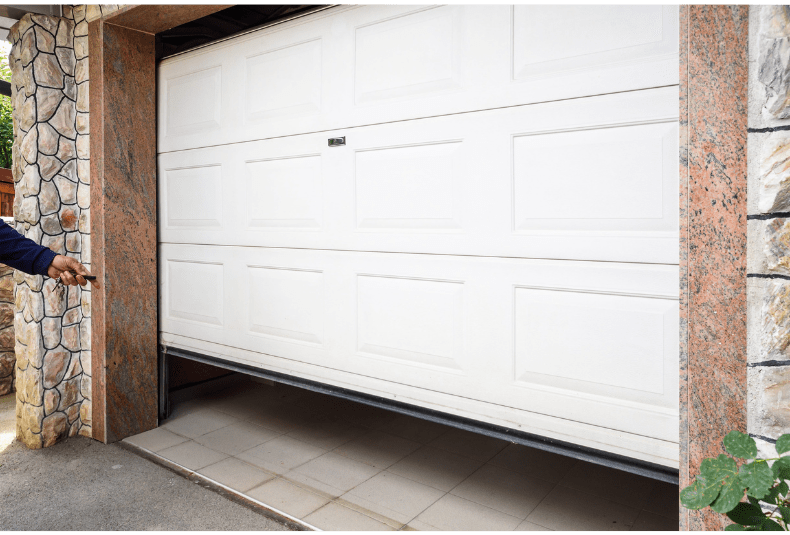Your garage door plays a crucial role in providing convenient access to your home. However, when it refuses to open all the way, it can be both frustrating and inconvenient. In this article, we’ll explore the common reasons behind the issue of a garage door not opening fully and provide solutions to help you resolve it.

Understanding the Garage Door Mechanism
How Garage Doors Operate
Garage doors operate through a complex mechanism involving springs, tracks, rollers, and an electric opener. When you press the opener button or use a manual control, the door should move smoothly along the tracks and open fully to allow entry or exit.
Common Causes of the Problem
1. Obstructed Tracks
One of the most frequent reasons for a garage door not opening all the way is obstructed tracks. Debris, leaves, or objects in the tracks can prevent the door from moving freely.
2. Misaligned Sensors
Garage doors often have safety sensors located near the bottom of the tracks. These sensors emit an infrared beam across the door’s path. If the sensors are misaligned, dirty, or obstructed, they can incorrectly signal that there’s an obstacle in the way, causing the door to stop prematurely.
3. Damaged Springs
The springs in your garage door system play a critical role in supporting its weight. If one of these springs is damaged or broken, it can prevent the door from opening fully. Broken springs are hazardous and should be replaced by a professional.
4. Limit Switches Need Adjustment
Garage door openers have limit switches that determine how far the door should open or close. If the limit switch for opening is not set correctly, the door may stop prematurely.
5. Remote Control Malfunction*
Issues with your garage door opener’s remote control can also result in the door not opening all the way. Malfunctions in the remote’s circuitry or a depleted battery can disrupt the signal.
Troubleshooting Steps
1. Clear the Tracks
Begin by inspecting the tracks for any obstructions or debris. Clean the tracks thoroughly to ensure smooth movement. Be sure to check the entire length of the tracks.
2. Sensor Alignment*
Make sure the safety sensors at the base of the tracks are properly aligned and clean. Adjust them if necessary to ensure they are facing each other. Clean the sensor lenses as well.
3. Examine Springs*
Visually inspect the springs for any signs of damage or breakage. If you notice any issues with the springs, do not attempt to repair them yourself. Contact a professional for spring replacement.
4. Adjust the Limit Switches*
Consult your garage door opener’s manual to locate the limit switches. Adjust the limit switch for opening to ensure it allows the door to open fully without stopping prematurely.
5. Check the Remote Control*
Test your remote control by replacing the batteries. If the issue persists, try reprogramming the remote to the opener according to the manufacturer’s instructions.
When to Seek Professional Help
If you’ve gone through the troubleshooting steps and your garage door still doesn’t open all the way, it’s advisable to consult a professional garage door technician. They have the expertise and tools to diagnose and repair more complex issues with your opener, sensors, or other components.
Conclusion
A garage door that doesn’t open all the way can be a frustrating problem, but it’s one that can often be resolved with careful inspection and troubleshooting. Regular maintenance and prompt attention to problems with your garage door ensure that it continues to provide you with the convenience and security you rely on every day. Remember that safety should always be a priority, and if you’re unsure about any aspect of garage door repair, it’s best to seek professional assistance.



Leave a Reply